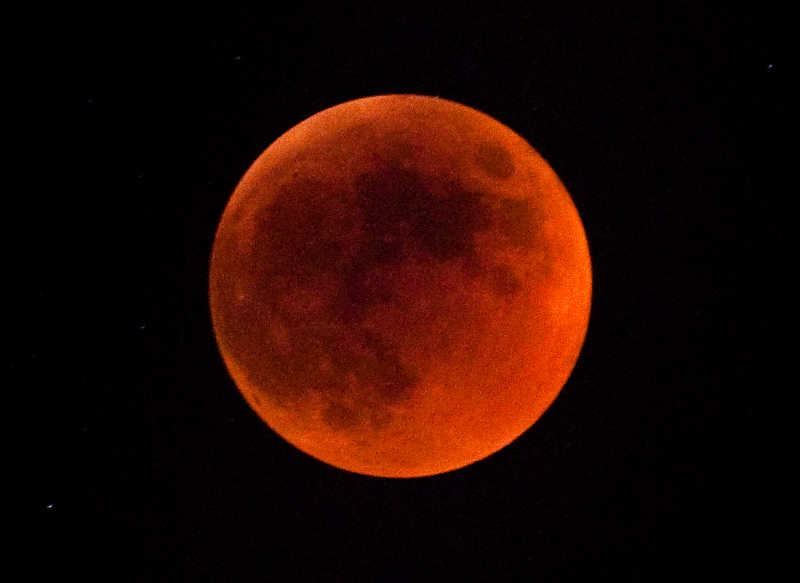
In the early hours of September 28th there will be a particularly spectacular lunar eclipse when the moon will be 10% closer to the Earth and larger than usual – a super moon, in fact. A lunar eclipse happens when the Sun, Earth and Moon are in a straight line, so that the moon passes through the Earth’s shadow.
If you were standing on the moon when this happened, you’d see the Earth as a black disc, surrounded by a thin red line – the Earth’s atmosphere. Recently, just after the New Horizons mission took its photo of the famous heart on Pluto, it flew through the shadow of the dwarf planet in order to get this view of Pluto’s atmosphere. They found that it was almost a million times lower pressure than Earth’s atmosphere, and consisted mostly of nitrogen, with a bit of methane and carbon dioxide. Back on Earth, scientists compare the light reflected off the full moon with the light reflected off the moon during an eclipse. Any difference must be due to the Earth’s atmosphere.
So why don’t we get a lunar eclipse every full moon? Because the moon’s orbit is inclined at 5º to the Earth’s orbit around the sun, so usually the moon passes above or below the Earth’s shadow. Sometimes it only goes through the edge of the Earth’s shadow, in a partial lunar eclipse. Besides, the moon’s orbit isn’t circular either, and the moon looks larger when it’s closer.
‘The best place in Europe to see the September eclipse is the island of La Palma, in the Canaries. (If you’re outside the UK, see this article.)The island has exceptionally clear, dark skies, which is why the biggest telescope in the world, Gran Telescopio Canarias, was built there. There will be a guided hike along the rim of the spectacular Caldera de Taburiente, a chance to photograph the eclipse and observe it though a good amateur telescope, followed by a visit to the professional observatory at the Roque de Los Muchachos.
Further information and the booking form at http://astrofestlapalma.com/lunar-eclipse-event/.
There is a reduction in the ticket price for anyone who also registers for one of the related events on La Palma: the International Astrotourism Conference which runs from September 25th – 27th for astrotourism professionals; the Nightscape Conference ( September 29th-October 2nd) for night photographers; and the Astromaster workshop, again for night photographers, which runs from October 3rd – 8th.
More information at http://astrofestlapalma.com
Cross posted at http://lapalma-island.com

I don’t want to stand on the moon myself, but I’d love to see the image you describe of the Earth’s atmosphere.